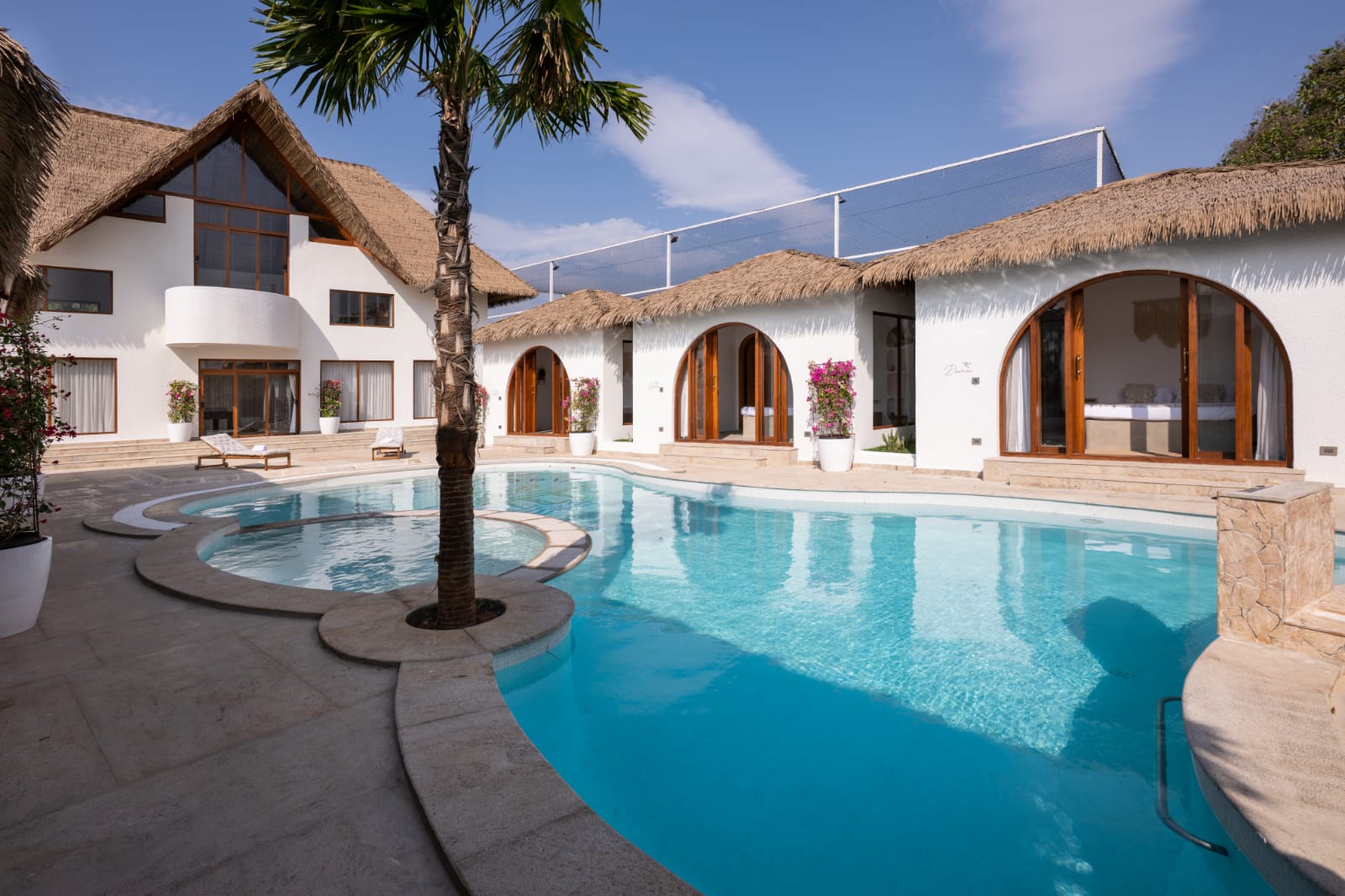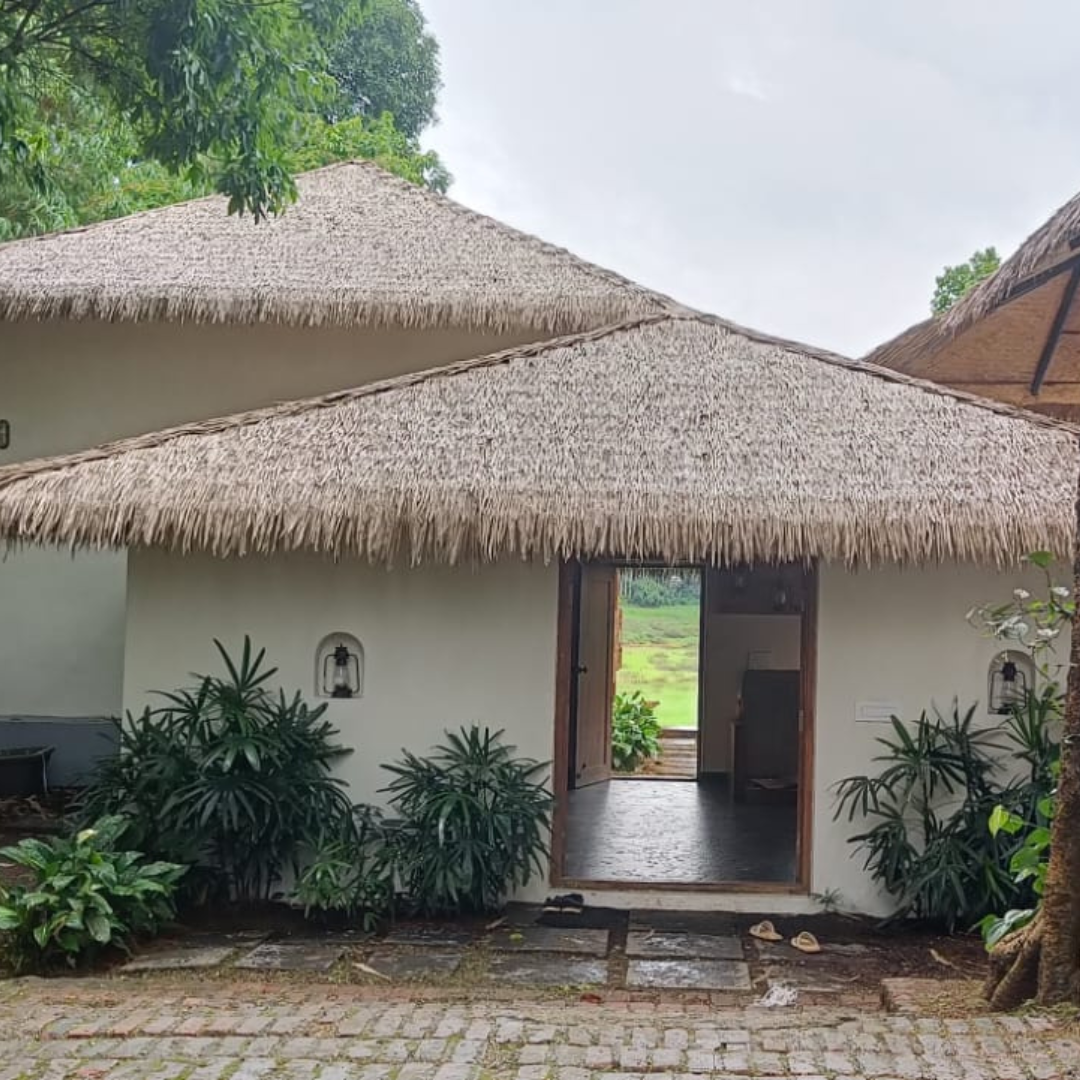As the world becomes more environmentally conscious, the construction industry is embracing change. Architects and developers are now seeking materials that don’t just look good, but also support a sustainable future. One standout material in this shift is synthetic thatch roofing. Combining traditional charm with modern technology, synthetic thatch offers a greener, more durable solution for homes and commercial spaces alike.
So, What Exactly is Synthetic Thatch Roofing?
Imagine the rustic beauty of a traditional thatched roof, made from natural materials like grass, reeds, or palm leaves. Now picture that same aesthetic, but with none of the downsides—no pests, no fire hazards, and minimal maintenance. That’s what synthetic thatch roofing brings to the table. It’s made from modern, long-lasting materials like PVC or HDPE (High-Density Polyethylene), designed to mimic the look of natural thatch while being far more durable and eco-friendly.
Why the Move Towards Sustainability?
With natural resources dwindling and environmental concerns on the rise, there’s more pressure than ever for the building industry to embrace eco-friendly practices. While natural thatch is beautiful and sustainable in theory, it requires significant upkeep and can pose risks like fires or pest infestations. Synthetic thatch roof steps in as the perfect solution—it retains the appeal of natural thatch but is much easier to maintain, and it offers a range of benefits that make it an excellent choice for green architecture.
The Eco-Friendly Perks of Synthetic Thatch
Synthetic thatch roofing isn’t just a pretty face—it’s packed with environmental benefits:
- Built to Last: Traditional thatch roofs can deteriorate over time due to weather exposure, pests, and general wear and tear. Synthetic thatch roof, on the other hand, is designed to last for decades, often outlasting many conventional roofing materials. This means fewer replacements and repairs, which saves resources in the long run and reduces waste.
- Conserving Natural Resources: Natural thatch requires ongoing harvesting of grasses, reeds, or palm leaves. While these materials are renewable, irresponsible harvesting can harm ecosystems. Synthetic thatch roof eliminates the need for constant natural material extraction, offering a more sustainable alternative that still gives you that cozy, organic look.
- Energy Efficiency: Thatch roofs—whether natural or synthetic—are great insulators. The thick, layered structure helps regulate indoor temperatures by keeping buildings cooler in the summer and warmer in the winter. With synthetic thatch, you’ll enjoy the same energy-saving benefits, potentially lowering your heating and cooling costs while reducing your energy use.
Minimal Maintenance, Minimal Waste
One of the biggest headaches with traditional thatch is the constant upkeep. You have to worry about mold, pests, and weather damage, all of which require ongoing maintenance. Synthetic thatch roof takes all that stress away. It’s resistant to pests, rot, and mold, and it doesn’t need the frequent repairs that natural thatch does. Less maintenance means fewer materials wasted over time, making synthetic thatch a smart choice for those who want to minimize their environmental impact.
A Safer Option with Fire Retardant Properties
Let’s be honest—one of the major downsides to natural thatch is its flammability. In certain areas, especially where wildfires are a risk, using natural thatch can be a non-starter. Thankfully, synthetic thatch is often designed with fire-retardant properties, making it a safer alternative for homes and businesses, especially in fire-prone regions.
Bridging Tradition and Innovation
What makes synthetic thatch so exciting is that it manages to keep the timeless beauty of traditional thatched roofs while offering all the advantages of modern materials. For centuries, thatch has been a defining feature of rural homes and tropical resorts. With synthetic thatch, you get the best of both worlds: the classic, rustic look of thatch, combined with the durability and sustainability that modern technology provides.
Where Synthetic Thatch is Making Its Mark
You’ve probably seen synthetic thatch more regularly than you realize. It’s becoming increasingly popular in a wide range of settings:
- Resorts and Theme Parks: Tropical resorts and theme parks love the look of thatch, but maintaining natural thatch in such high-traffic, weather-exposed areas can be a nightmare. Synthetic thatch roof gives them the same laid-back, tropical vibe with none of the hassle.
- Sustainable Homes: More and more eco-conscious homeowners are turning to synthetic thatch for its long-term benefits. Not only does it cut down on energy costs, but it also requires little upkeep—perfect for those looking to reduce their carbon footprint without sacrificing style.
- Public and Commercial Spaces: From restaurants to eco-lodges and even urban commercial spaces, synthetic thatch is finding its way into more projects. It’s highly customizable, allowing architects to tailor it to the specific needs of each project while still keeping that natural, textured aesthetic.
Why Synthetic Thatch is Becoming the Go-To Option
Several key factors are driving the popularity of synthetic thatch, especially in green building projects:
- Cost Efficiency: While it might cost more upfront compared to some traditional roofing materials, synthetic thatch pays for itself over time. Its durability and low-maintenance nature mean you’ll spend less on repairs and replacements in the long run.
- Versatility: Whether you’re designing a rural retreat, an urban business, or a high-end resort, synthetic thatch can fit the bill. It’s adaptable to various architectural styles and can be customized to meet specific design needs.
- Environmental Responsibility: As sustainability becomes a top priority for builders and homeowners alike, synthetic thatch is stepping up as a responsible, eco-friendly alternative that minimizes its impact on the environment.
The Future of Synthetic Thatch in Sustainable Architecture
The demand for eco-friendly building materials is only growing, and synthetic thatch is positioned to play a significant role in the future of green architecture. It blends the best of both worlds: the durability and energy efficiency of modern materials with the charm and tradition of a classic thatched roof. As technology continues to evolve, synthetic thatch will likely become an even more attractive option for those looking to build sustainably while creating beautiful, energy-efficient spaces.
In short, synthetic thatch roofing is more than just a trend—it’s a forward-thinking solution for today’s environmentally conscious world. Whether you’re an architect, developer, or homeowner, it’s a material that delivers on both performance and aesthetic, offering a greener, more sustainable future for roofing. Contact KHW Solutions Today to get the premium synthetic thatch at best price.




